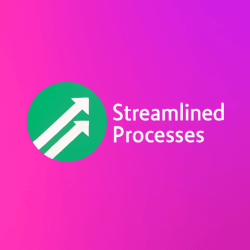For Automated Content Distribution, see our main page here.
Understanding the Power of Automated Content Distribution
Publishing content is only the first step. The real impact starts when the content reaches the right audience at the right time. Automated Content Distribution helps streamline this process by using tools and technology to share your content efficiently across multiple platforms. Consequently, it increases traffic, saves time, and improves consistency.
Instead of posting to various platforms manually, automation tools ensure that your message is sent out according to a preset schedule. This shift gives marketers more time to focus on strategy and creativity. Most importantly, it helps brands maintain a constant online presence—even during non-business hours.
How Does Automated Content Distribution Work?
Automated solutions function by integrating multiple content channels (blogs, social media, newsletters, etc.) into one central system. Once content is created, the system schedules and distributes it based on predetermined rules. For example, a blog post can be shared to LinkedIn, Twitter, and Facebook simultaneously or staggered over time to maximize exposure.
Some platforms use AI to analyze best posting times, then automatically publish based on audience behavior. As a result, content has a better chance of reaching high-engagement windows, creating more visibility and interaction.
Why Automation Beats Manual Sharing
Before automation, marketers had to copy, paste, and repost content individually. This was time-consuming and prone to errors. Automated Content Distribution eliminates human oversight, offering a more reliable rhythm of publication.
- Consistency: Scheduled publishing ensures regular content delivery, keeping your audience engaged.
- Reach: Automation increases outreach across multiple time zones and demographics.
- Efficiency: Marketing teams regain time for higher-level tasks like analysis and strategy.
- Insight: Some systems offer performance tracking to refine targeting and timing.
Moreover, automation reduces repetitive tasks and lowers the risk of missing key publishing deadlines. It aligns with broader marketing goals and contributes to a data-driven content strategy.
Popular Tools for Automated Content Distribution
There are numerous tools designed to support automated sharing. Each has different strengths, depending on your team size, content types, and distribution goals.
- Buffer: Ideal for small teams to manage multiple social accounts effortlessly.
- HubSpot: Comprehensive CRM and content distribution platform.
- Hootsuite: Popular for its analytics dashboards and cross-platform scheduling.
- Zapier: Connects various apps to automate workflows and content updates.
- CoSchedule: Integrates editorial calendars with distribution efforts for better coordination.
These tools also offer templates, analytics, and collaboration features. Consequently, they reduce friction between content creation and publication.
Case Study: Real Results From Automation
One B2B software company adopted Automated Content Distribution with Buffer and saw a 60% increase in website visits in three months. By scheduling blog articles and repurposing content on LinkedIn and Twitter, their following grew organically. Furthermore, sales reported more qualified leads entering their funnel.
Another example comes from a fashion retailer that used AI-powered scheduling to target Instagram users during high-engagement hours. This boosted their click-through rate by 45% compared to their previous manual approach.
Integrating Distribution With a Larger Strategy
Content distribution should not exist in a vacuum. It must align with SEO, branding, and audience engagement strategies. Include Automated Content Distribution in your editorial calendar and ensure content is adapted per platform.
For example, blog posts can be summarized into tweets or turned into engaging Instagram Slides. In the same vein, a customer testimonial video can be sliced into quote images and shared on Facebook. Reimagining content this way increases ROI and audience touchpoints.
Common Mistakes to Avoid
- Over-posting: Too much automation may overwhelm your audience.
- Lack of tailoring: Posting the same format across all channels can reduce engagement.
- Ignoring analytics: Without performance tracking, automation loses strategic value.
- Inconsistent branding: Misaligned visuals or tone can harm brand recognition.
To clarify, automation should support—not replace—strategic thinking. Therefore, regular oversight is crucial to adjust campaigns and stay relevant.
Trends Shaping the Future of Automated Content Distribution
AI has made automation smarter. Current systems analyze engagement data to tweak schedules, formats, and channels. Likewise, natural language generation (NLG) can now repurpose long-form content into targeted social posts or newsletters.
Furthermore, integration between marketing software is growing. CRM systems now talk to distribution tools, allowing content to trigger based on customer behavior. This leads to timely, personalized messages that convert better.
Meanwhile, voice assistants and smart speakers are carving out new channels for content reach. Therefore, marketers must prepare to distribute voice-optimized content formats as the landscape evolves.
FAQ: Automated Content Distribution
What kinds of content can be distributed automatically?
You can automate blog posts, social media updates, newsletters, webinars, and even video clips. So long as the format and schedule are supported by your tool, automation applies.
Is there a risk of sounding robotic?
Yes, but this can be avoided by customizing messaging per platform and reviewing scheduled content. Use human tone and visuals to preserve authenticity.
Can automation completely replace manual posting?
Not entirely. While most tasks can be automated, strategy and engagement still require human touch. Likewise, real-time content such as event updates may need manual input.
How often should I review my automated campaigns?
At least monthly. However, during fast-moving campaigns, weekly checks ensure alignment and performance tuning.
What’s the biggest benefit?
The major gain is time. Automated Content Distribution gives you hours back each week while ensuring your message is timely and consistent.
Final Thoughts on Modern Content Delivery
Automated Content Distribution is not just a trend—it’s a shift in how we share, amplify, and engage audiences. From small businesses to enterprise teams, automation opens doors to smarter workflows, broader reach, and measurable results.
In short, distributing valuable content doesn’t need to be time-consuming. With the right tools and approach, you can scale your voice and deliver impact more consistently and efficiently.
This article was created with the assistance of AI tools and reviewed by our team at Streamlined Processes LLC to ensure accuracy and relevance.
Follow us on Facebook here.

